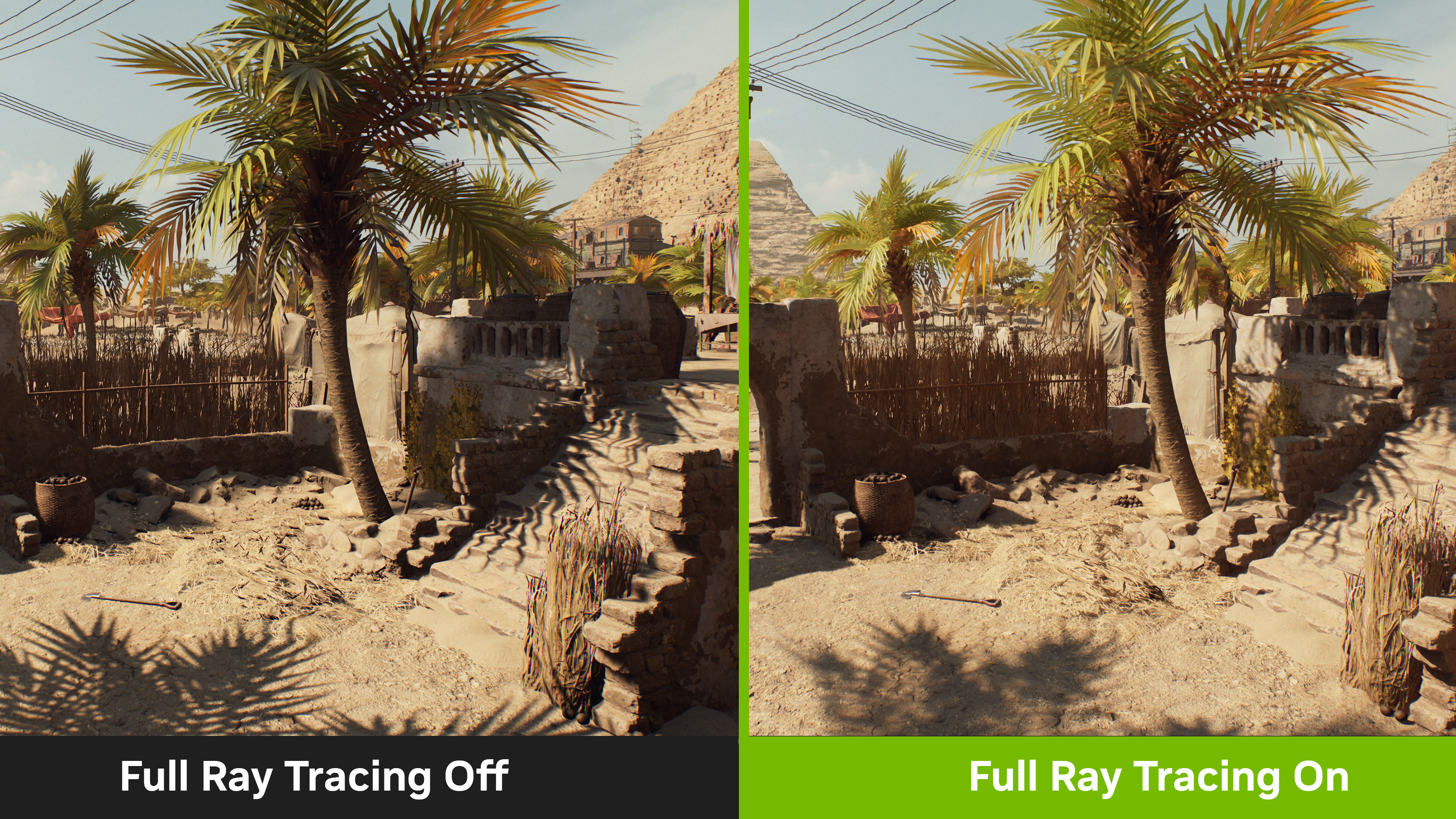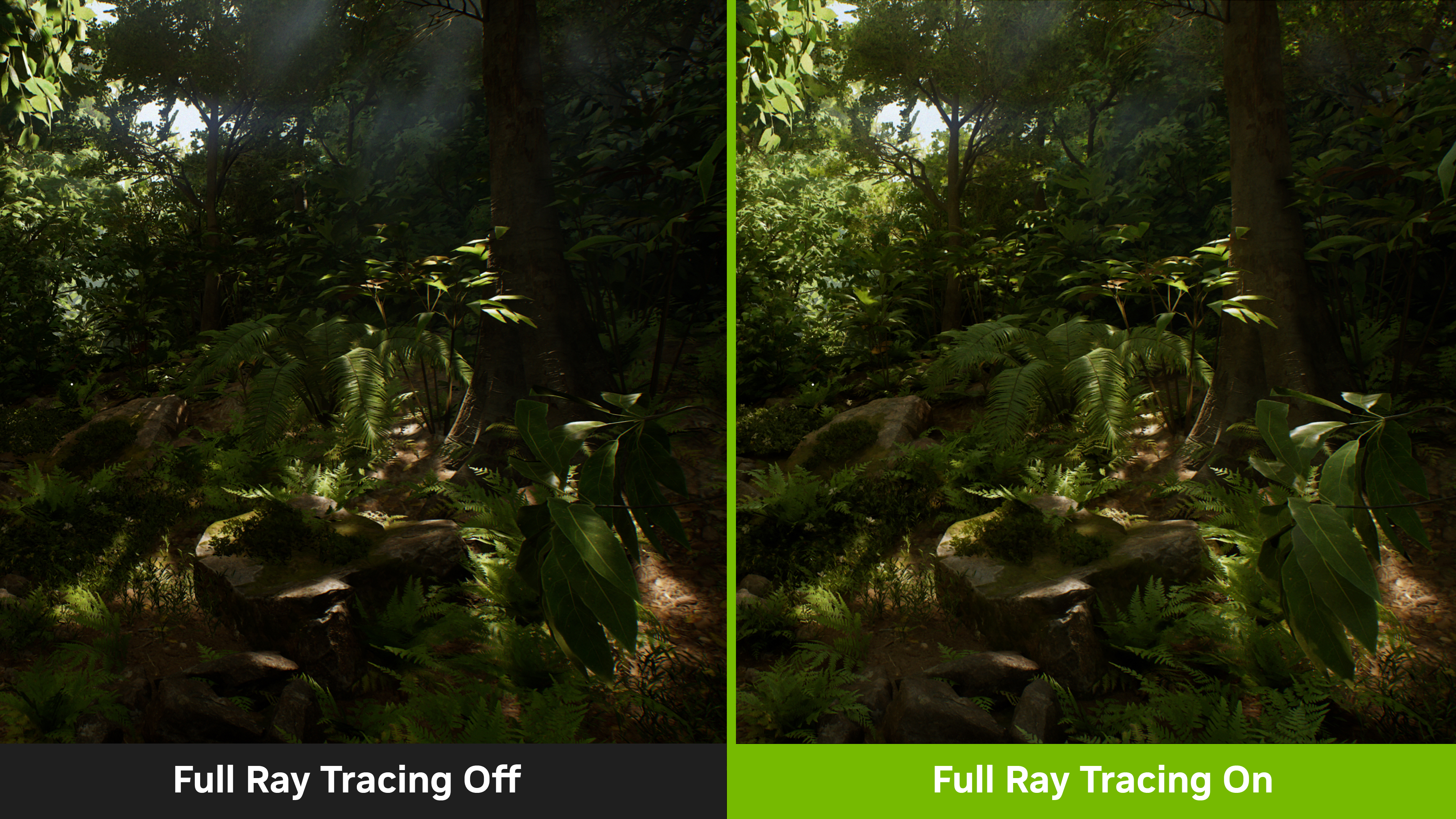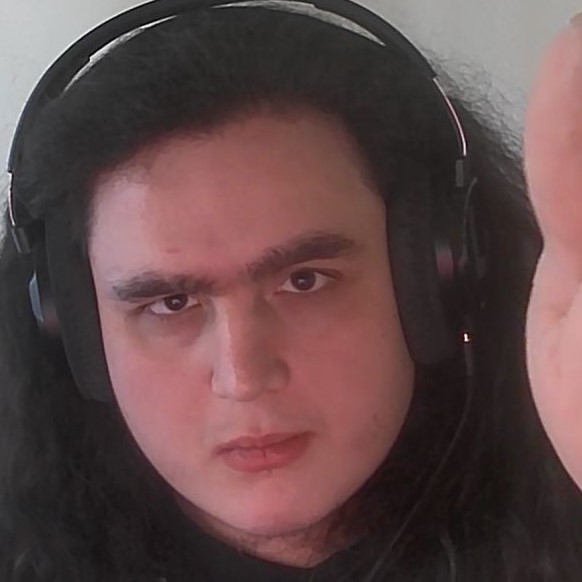Nvidia reveals detailed ray tracing differences, promotes DLSS 3 for Indiana Jones and the Great Circle
"Full Ray Tracing" can be applied to sun shadows, global illumination, and subsurface scattering

Last week, the (relatively) sky-high system requirements of Indiana Jones and the Great Circle proved to be one of the most talked-about stories in PC hardware that week. This week, though, the game is out, and Nvidia is already promoting it. The extent of its "Full Ray Tracing" graphics feature additions adds some Path Tracing features to a game already built on top of standard Ray Tracing as a requirement.
Aside from providing some analysis of the optional Path Tracing RT features, the Nvidia posting also clarifies that Indiana Jones and the Great Circle has launched with full support for DLSS 3, including its Frame Generation and Super Resolution features.
While the required and recommended specifications of this game are indeed high, it's important to note that they do seem to scale with the actual technical ambition of the game. While it's true that Great Circle uses the same id Tech 7 game engine as Doom Eternal, which was eventually retrofitted with RT reflections, Great Circle is built more like Metro Exodus Enhanced Edition since it is fundamentally built around ray-traced lighting and shading from the get-go, even without the Path Tracing/Full Ray Tracing settings enabled.
Where Doom Eternal was aiming for a performant, immersive rip-and-tear gaming experience, Indiana Jones and the Great Circle is instead aiming for a more cinematic, realistic form of immersion, complete with countless Indy lore easter eggs and large-scale interactive levels resembling Hitman far more than Call of Duty or Machine Games' prior Wolfenstein games.

Full RTGI (global illumination) example

Full RT sun shadows example
Of the settings that can be selectively Path-traced, the most high-impact one is certainly Global Illumination, in the form of RTGI. Global illumination ensures that light bounces and reflects properly within a scene, dramatically improving the realism of the lighting.
Combined with the Path Traced sun shadows setting, you get uber-realistic lighting and shading that distorts, absorbs, and refracts color realistically according to the surroundings. The color that becomes visible within the desert tree leaves is particularly striking with these settings enabled compared to going without.

Path Traced subsurface scattering example

Full resolution RT reflections example
Path Traced settings that will be much harder to notice in standard play are Path Traced Foliage subsurface scattering and full-resolution RT reflections. On the note of reflections first, the game requiring RT as a baseline should mean that RT reflections are present either way.
Get Tom's Hardware's best news and in-depth reviews, straight to your inbox.
Still, Nvidia's emphasis on "full resolution" makes us think that this setting could be amping up RT reflections rather than falling back on screen space techniques without them, but further testing is required to validate that. Fortunately, games have been made for decades with the expectation that you aren't doing path-traced reflections, so this setting will be easy to ignore in most scenarios.
Path Traced foliage subsurface scattering is another easy-to-ignore setting, though truthful, and it does look incredibly cool. For those unfamiliar with subsurface scattering as a graphics technique, it refers to how light interacts (is scattered) beneath a given surface. Usually, subsurface scattering is used to make remarkably realistic human skin and facial animations. However, applying the technique to foliage allows its natural translucency and refractive properties to be reflected in the game. It's an incredibly cool, granular detail— but probably not worth enabling if you're struggling to hit 60 FPS.

Christopher Harper has been a successful freelance tech writer specializing in PC hardware and gaming since 2015, and ghostwrote for various B2B clients in High School before that. Outside of work, Christopher is best known to friends and rivals as an active competitive player in various eSports (particularly fighting games and arena shooters) and a purveyor of music ranging from Jimi Hendrix to Killer Mike to the Sonic Adventure 2 soundtrack.
-
Pierce2623 Those are not “large” differences. You have to have a side by side to even notice. I wouldn’t notice if compared the settings back to back on my PC. Sorry but crippling frame rate for marginally more realistic lighting isn’t what I consider “advancement”.Reply -
Neilbob Probably highly subjective, but I rather prefer the look of 'Full Ray Tracing Off'. The 'Ray Tracing On' half of those example screenshots look sort of washed out to me.Reply
The fact I'll never play this game surely makes my opinion more important? Yes, I think so. -
emike09 I'm absolutely loving what path tracing can do here. In a pitch-black tomb, illuminated only by my torch, it changes where I decide to set the torch down to work a puzzle, so I have the best lighting for a given scenario. The way that light dynamically fills the room brings me joy. Interior lighting is glorious to behold, and it's always changing based on your position or how you manipulate the world.Reply
We're one step closer to film-grade graphics, and I thought we were still one or two GPU generations down the line before seeing this. Granted I'm on a 4090, so in a sense that's technically still true. The real-time rendered cinematics, at times, are almost indistinguishable from film, partially made possible by the incredible motion capture used here. And all of this at 60+ fps consistently without shader or transversal stutter that has been plaguing gaming (thanks UE).
ID Tech 7 seems to have some pretty amazing tech to offer, with only a single major game release and what I'd call and engine proof-of-concept game (Doom Eternal). Very excited to see what other developments come from this engine. -
thestryker I feel like Path Tracing is truly the new "can it run Crysis" because the implementations (all 3 of them) have been very impressive. The problems of course being that it's not widespread and the hardware required to run it realistically is a 4090. I think in 2-3 years we'll start to see more path tracing as the hardware becomes more readily available and software crutches become even better.Reply
I think the move with this game to require hardware RT is smart and makes sense for any game that is supposed to be a graphics showcase. This should allow for certain parts of rendering to just look better in general along with being simpler to implement. -
heffeque Reply
Yet there are games that are 5 years old or more (such as "Red Redemption 2", "Hellblade: Senua's Sacrifice", "The Last of Us", "A Plague Tale: Innocence", "Death Stranding"...) that look and feel much better than what's shown on that Indiana Jones video.emike09 said:We're one step closer to film-grade graphics -
atomicWAR While you need a 4090/copious amounts of VRAM to run this at 4K at higher frame rates, it looks gorgeous. There are some kinks that need working out. HDR with frame gen being broken is chief among them imo. Granted simply adding Nvidia latest DLLs to the game folder will fix the problem, mostly as it bugs out if you alt tab out and requires a game reboot. But I think to have a game that requires ray tracing will start to push the needle in the right direction on better lighting/reflections/etc so by the time the next gen consoles drop we could start seeing path tracing as the new normal in most games. I am FINALLY getting excited for RTX hardware results in games. Only took three generations...Reply -
emike09 Reply
To be fair, you can't compare YT videos to something you played in person on the same hardware. It's never the same.heffeque said:Yet there are games that are 5 years old or more (such as "Red Redemption 2", "Hellblade: Senua's Sacrifice", "The Last of Us", "A Plague Tale: Innocence", "Death Stranding"...) that look and feel much better than what's shown on that Indiana Jones video.
Big fan of RDR2 and Hellblade. Politely have to disagree that Death Stranding can stand next to any of these other three titles. RDR2 is all baked lighting. It looks great, years ahead of its time, but it's not real-time and requires the devs to provide solutions for all dynamic lighting scenarios.
Hellblade is gorgeous for sure. I spent more time in photo mode than playing the story. But Hellblade is limited by Lumen with the scope of RTGI, mostly by performance. I get 50% better performance in IJ in comparison, and that's with a dramatically more detailed and richer world. Play IJ with path tracing and tell me what you actually think then :P -
edzieba ReplyOn the note of reflections first, the game requiring RT as a baseline should mean that RT reflections are present either way.
By default ("RTX off") the game will use lower resolution RTGI as its only illumination pipeline, but will use screen-space reflections.
In screenshots. Once you are actually in a game environment and able to move the camera - and able t move light sources - the difference between real-time ray-traced lighting and precomputed lighting is immediate and obvious.heffeque said:Yet there are games that are 5 years old or more (such as "Red Redemption 2", "Hellblade: Senua's Sacrifice", "The Last of Us", "A Plague Tale: Innocence", "Death Stranding"...) that look and feel much better than what's shown on that Indiana Jones video.
